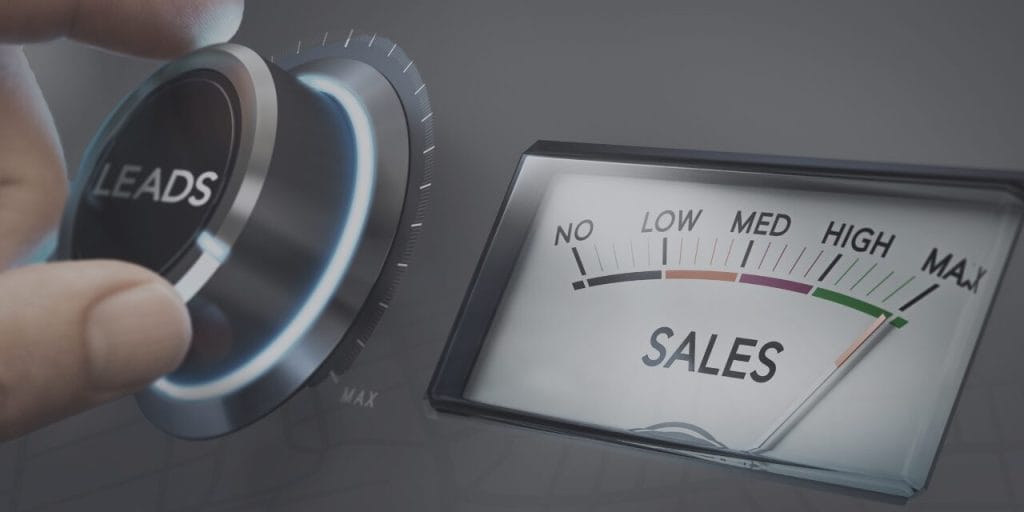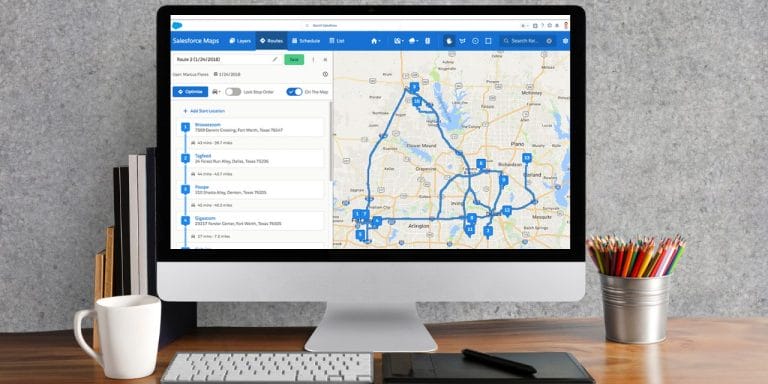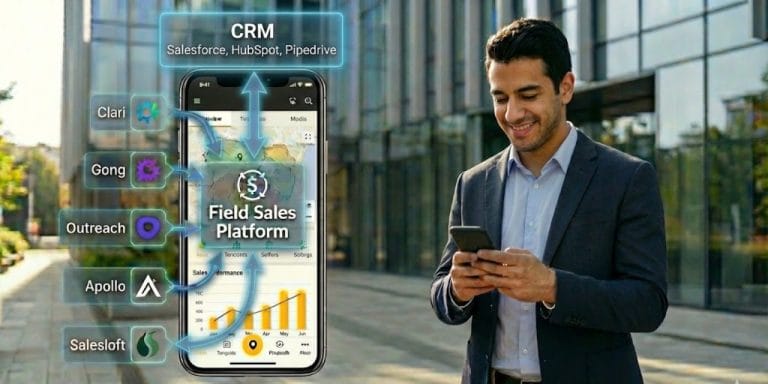As a B2B sales leader, you know the landscape has changed. The old playbook of just knocking on more doors is gathering dust for a reason. Your team is smart and they hit their numbers, but you’re looking for that next gear — the strategic edge that turns a good year into a record-breaking one. You’re not starting from scratch, but in a market where buyers conduct extensive online research before ever speaking to a sales rep, refining your approach is no longer optional; it’s essential for survival and growth.
Generating a steady stream of qualified leads remains the top challenge for B2B marketers, and the pressure on you and your team to convert them is immense. This isn’t about simply doing more; it’s about doing the right things with precision and intelligence. It’s about building a resilient lead generation engine that finds prospects within your territories and builds the trust needed to guide them through their complex buying journey.
This guide is for you. We’ll move beyond the basics and dive into the proven, data-backed strategies that are driving real results today and will continue to do so in 2025. Let’s explore how you can empower your field team to cut through the noise, capture buyer attention, and create a sustainable pipeline for success.
Table of contents
- 1. Build Data-Driven Ideal Customer Profiles (ICPs)
- 2. Implement a Strategic Lead Qualification Framework
- 3. Master Multi-Channel Outreach Sequences
- 4. Leverage AI-Powered Sales Intelligence Tools
- 5. Arm Your Team with High-Value Content to Educate and Persuade
- 6. Embrace Account-Based Marketing (ABM) for Key Targets
- 7. Optimize Social Selling on LinkedIn
- 8. Understand and Leverage Automated Nurturing
- 9. Establish a Formal Referral Program
- 10. Truly Align Your Sales and Marketing Teams
- 11. Analyze Your Team’s Data to Refine and Win
- Frequently Asked Questions for Field Sales Leaders
- Turn Strategy into Action with SPOTIO
Key Takeaways: What’s Driving Field Sales Success in 2025
- Quality Over Quantity: Lead quality issues affect 42% of B2B businesses. Successful field teams focus on identifying and engaging high-fit prospects in their territories, not just chasing every possibility.
- Data is Your Foundation: Building a detailed, data-driven Ideal Customer Profile (ICP) is the critical first step. Leveraging sales intelligence platforms can provide over 200 unique data points to pinpoint the best prospects in a specific geography.
- Nurturing is Non-Negotiable: Companies with strong lead nurturing practices generate 50% more sales-ready leads at a 33% lower cost.
- Alignment is Profit: When sales and marketing teams are aligned, companies see 38% higher win rates.
- Social Selling Works: Sales professionals who incorporate social selling into their strategies are 51% more likely to achieve their sales quotas.
1. Build Data-Driven Ideal Customer Profiles (ICPs)
Your ICP is the blueprint for every lead generation effort your field team undertakes. Without a clear, precise definition of who you’re targeting, your reps risk wasting precious time on unqualified leads that will never buy. In 2025, a robust ICP goes beyond basic demographics to include behavioral insights.
- Analyze Your Best Customers: Who gets the most value from your product?Identify the common attributes they share, from industry and company size to specific locations and growth signals.
- Identify Behavioral Indicators: Look at how your top customers engage. What content do they consume? What specific pain points does your solution solve for them? This insight helps your reps tailor their conversations from the very first touchpoint.
- Leverage Advanced Data: To truly refine your territory targeting, use sales intelligence platforms like SPOTIO’s Lead Machine to analyze over 200 unique data points, such as a prospect’s technology stack, credit scores, or other business characteristics that signal a high-probability opportunity.
2. Implement a Strategic Lead Qualification Framework
Effective field sales is about qualifying opportunities efficiently, not just filling the pipeline. You must empower your reps to qualify prospects before investing significant time and travel, allowing them to focus on deals that are likely to close.
| Framework | Core Components | Best for Field Sales Leaders Because… |
|---|---|---|
| MEDDIC | Metrics, Economic Buyer, Decision Criteria, Decision Process, Identify Pain, Champion | It provides a rigorous checklist for complex enterprise sales, forcing reps to identify the true economic buyer and build a strong internal business case. |
| CHAMP | CHallenges, Authority, Money, Prioritization | It encourages reps to lead with the prospect’s problems, which is a more consultative and effective approach in modern B2B sales. |
| GPCTBA/C&I | Goals, Plans, Challenges, Timeline, Budget, Authority, Consequences & Implications | It’s ideal for complex, high-value field sales where reps need to uncover the deep business impact and urgency of a solution. |
Choose one framework and train your team on it relentlessly. A shared qualification language is the first step toward predictable forecasting and revenue growth.
3. Master Multi-Channel Outreach Sequences
Today’s B2B buyers operate across numerous channels, and a single-touch approach (like a cold walk-in or a single phone call) is no longer enough.Prospects expect personalized communication where they are most active. An effective strategy for a field rep combines digital and physical touchpoints over several weeks.
- Know Your Channels: Data shows where your reps’ efforts are best spent.
- Email: 80% of prospects prefer communication via email.
- Phone: 57% of C-level executives favor phone outreach.
- LinkedIn: 78% of sales reps use social media for prospecting.
- In-Person Visit: For field teams, this remains a powerful differentiator for high-value prospects in a specific territory.
- Build a Smart Sequence: Don’t just have your reps message randomly. A strategic sequence builds momentum and context for a field visit:
- Day 1: Personalized LinkedIn connection request.
- Day 3: Email sharing a relevant case study or insight.
- Day 7: Phone call referencing the previous touchpoints.
- Day 10: Targeted in-person visit to the prospect’s location.
- Day 14: Follow-up email referencing the visit and a specific pain point discussed.
As Trey Gibson says, “You can’t shortcut trust. When you show up in person, you’re demonstrating a level of commitment to the relationship that digital interactions simply can’t match.”
4. Leverage AI-Powered Sales Intelligence Tools
Gut feelings about a territory are no longer enough. Modern lead generation relies on platforms that use AI to identify and prioritize prospects. These tools give your field reps the data needed to find the “needle in the haystack” and personalize outreach at scale.
Top-Performing Sales Intelligence Tools for Field Teams in 2025
| Tool | G2 Rating | Key Strength | Best For |
|---|---|---|---|
| ZoomInfo | 4.5 stars | AI-driven lead recommendations | Enterprise field teams needing deep company data |
| Cognism | 4.6 stars | GDPR-compliant data, 70M+ mobile numbers | Field teams operating in European markets |
| 6sense | 4.0 stars | Predictive analytics | Account-based field sales strategies |
| Apollo.io | 4.7 stars | Automated sequences, lead scoring | SMB and mid-market field teams |
Consistent usage is key. Field teams that integrate these tools into their daily territory planning and pre-call prep see significantly higher conversion rates.
5. Arm Your Team with High-Value Content to Educate and Persuade
While your marketing team creates the content, your field team must know how to wield it as a powerful sales tool. High-quality content builds trust and demonstrates expertise long before a final proposal is sent. As a leader, ensure your reps know what’s available and how to use it.
- Video for Validation: A product demo video can show your solution in action, while a customer testimonial video builds trust through authentic success stories. Reps should send these before a meeting to set the stage.
- Interactive Tools for Discovery: An ROI calculator or an assessment tool helps a prospect quantify their problem. Encourage your reps to walk through these tools with a prospect during a meeting.
- Case Studies for Proof: A well-written case study with specific metrics is the ultimate proof that you can solve the prospect’s problem. This is a critical leave-behind after a successful first meeting.
6. Embrace Account-Based Marketing (ABM) for Key Targets
ABM focuses deep resources on a select group of high-value accounts, treating each one as a market of one. This is a natural fit for field sales, where reps are assigned strategic accounts within a territory. Instead of casting a wide net, your team can coordinate to penetrate these key accounts from multiple angles.
- Track Account Engagement: Shift your metrics from individual lead volume to overall account engagement, tracking how the entire company is interacting with you over time.
- Identify Target Accounts: Work with marketing to select a focused list of high-value companies that perfectly match your Ideal Customer Profile, prioritizing quality over sheer volume.
- Map the Buying Committee: Identify all the key players within a target account—from the economic buyer to the end-users—to understand the full decision-making landscape before you engage.
- Orchestrate Coordinated Outreach: Act as a “quarterback,” tailoring your messaging and outreach (calls, emails, social media, and visits) for each specific role within the account.
7. Optimize Social Selling on LinkedIn
Social selling is no longer a niche tactic; it’s a clear competitive advantage. For modern field reps, LinkedIn is an indispensable channel. It’s where they can research prospects before a visit, build credibility, and engage with decision-makers who are otherwise hard to reach.
- Optimize Their Profile: A rep’s profile is their digital business card. It needs a professional headshot and a compelling summary that speaks directly to their territory’s key industries and pain points.
- Share Valuable Content: Encourage reps to share insights and customer success stories relevant to their local market. This positions them as a local expert, not just another salesperson.
- Engage Meaningfully: Train your team to do more than just send connection requests. They should comment thoughtfully on prospect and customer posts, and participate in relevant industry group discussions.
8. Understand and Leverage Automated Nurturing
While marketing typically owns the automation platform, a smart field sales leader understands how it works. Automated nurturing is what warms up a lead before it gets assigned to your rep. Nurtured leads make 47% larger purchases than non-nurtured ones. Ensure your reps know a lead’s history:
- Awareness Stage: Did the lead download an educational whitepaper or industry report?
- Consideration Stage: Did they view a case study or use an ROI calculator?
- Decision Stage: Did they visit the pricing page or watch a demo video?
This context, passed from marketing to sales through your CRM, allows a field rep to tailor their opening conversation for maximum impact.
9. Establish a Formal Referral Program
Referrals are some of the best leads a field rep can get. Yet, many companies leave this powerful source of business to chance. As a leader, you can formalize the process.
- Incentivize Your Reps and Customers: Create a simple system that rewards both the customer for giving a referral and the rep for securing it. This could be a discount for the customer or a cash rebate.
- Make it a Process: Train your reps to ask for referrals at a specific time, such as after a successful implementation or during a positive quarterly business review. You can also partner with non-competing businesses to generate referrals.
10. Truly Align Your Sales and Marketing Teams
Misalignment between sales and marketing leads to wasted resources, poor quality leads, and a frustrating experience for your reps. When these two teams are fully aligned, however, companies experience 32% greater year-over-year revenue growth.
- Establish a Service-Level Agreement (SLA): Both teams must agree on the specific, data-driven criteria for a Marketing Qualified Lead (MQL) and what defines a Sales Accepted Lead (SAL).
- Create Feedback Loops: Your field reps have the best on-the-ground intelligence. Create a formal process for them to give feedback to marketing on lead quality and content effectiveness.
11. Analyze Your Team’s Data to Refine and Win
No strategy is effective forever. The most critical, overarching strategy for any leader is to continuously analyze your team’s data to see what’s working and what isn’t.
- Map Your Territories and Customers: Use territory mapping tools to see which areas are performing well and, more importantly, why. Map existing customers to identify clusters and opportunities for referrals or “lookalike” prospecting nearby.
- Track the Right Field Sales KPIs: Move beyond just “number of visits.” Track lead-to-opportunity conversion rates, sales cycle length, and win rates by source.
- Coach to the Data: Use this data to have informed coaching conversations. If a rep’s conversion rate is low, it may indicate a problem with qualification. If their sales cycle is long, they may need coaching on creating urgency.
Frequently Asked Questions for Field Sales Leaders
Q: How can I use territory mapping to improve lead generation?
A: Territory mapping is one of your most powerful strategic tools. First, map all your existing customers to visually identify where your strengths are. You can then use this data to find similar “lookalike” businesses in the same area. Second, analyze underperforming territories to understand why they are struggling. Is the lead distribution uneven? Does the assigned rep lack specific industry knowledge? This data allows you to rebalance workloads and provide targeted coaching to improve lead generation across your entire team.
Q: My reps are great in person. How do I get them to actually use social selling?
A: Start by framing it as a tool for in-person success. Show them how 30 minutes of LinkedIn research can make their next meeting 50% more effective. Highlight its use for pre-call research, identifying key stakeholders, and finding a personal connection (like a shared university or interest) to build rapport. Then, make it part of your process. In your weekly pipeline reviews, ask what they learned about a key prospect on LinkedIn. This signals its importance and builds the habit.
Q: What’s the best way to ask a customer for a referral?
A: The key is timing and making it easy for them. The best time to ask is right after they’ve given you positive feedback or achieved a significant result with your product. Don’t just ask, “Do you know anyone?” Instead, be specific: “We’re so glad you’ve had success with [X feature]. We’re looking to help other manufacturing leaders in the area solve similar challenges. Is there anyone in your network you think might benefit from a conversation?” This frames it as helping their peers, not just helping you.
Q: How do you get reps to consistently use a lead qualification framework like MEDDIC?
A: Tie it directly to their success and your coaching. First, ensure the framework is integrated directly into your CRM, so they have to fill out the fields to advance an opportunity. Second, use the framework’s language in all your pipeline reviews and 1-on-1s. Ask questions like, “Have you identified the Economic Buyer?” or “What are the Metrics we can use to prove value?” When reps see that this is how deals are evaluated, they will adopt the methodology.
Q: What are the most important metrics for measuring lead quality for a field team?
A: Volume metrics are vanity; quality metrics tell the real story. Focus on these three:
- Lead-to-Opportunity Conversion Rate: What percentage of the leads assigned to your team are qualified enough to become real opportunities? A low rate indicates a problem at the top of the funnel.
- Sales Cycle Length: Are leads from a certain source closing faster than others? This often indicates higher quality and better initial qualification.
- Win Rate by Source: This is the ultimate measure. If leads from your referral program have a high win rate and leads from a purchased list have a low win rate, you know exactly where to focus your team’s energy.
Turn Strategy into Action with SPOTIO
Success in 2025 doesn’t come from adopting every strategy at once, but from choosing the few that best align with your team and executing them with precision. To do that, your team needs a platform built specifically for the unique challenges of field sales. SPOTIO is the field sales engagement platform that operationalizes these advanced strategies, turning your plans into pipeline. You can fine-tune territories with advanced mapping, build multi-channel sequences of calls, emails, texts, and in-person visits with Autoplays, and automatically log every interaction to your CRM.
By equipping your team with a single platform to manage their leads, track their activities, and analyze their performance, you give them everything they need to generate more leads and close more deals. To learn more, request a demo today.




